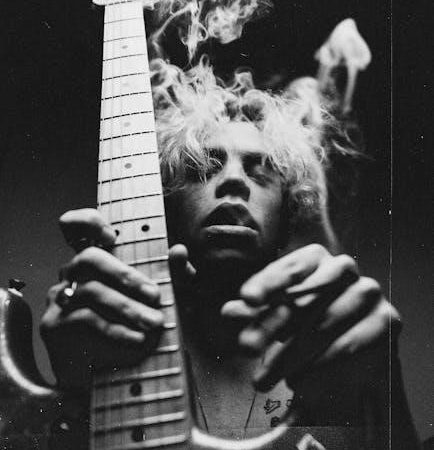maplestory demon slayer guide
MapleStory Demon Slayer⁚ A Comprehensive Guide
This guide delves into the intricacies of the MapleStory Demon Slayer class, offering insights into optimal skill builds, essential equipment choices, and advanced gameplay strategies for both mobbing and bossing encounters․ Master Demon Fury, understand hyper skill selection, and conquer Maple World!
The Demon Slayer is a captivating warrior class within MapleStory’s Resistance faction, renowned for its unique blend of power and mobility․ Unlike many classes relying on MP, Demon Slayers harness Demon Fury (DF) as their primary resource, fueling their devastating attacks․ This resource regenerates passively and is boosted by successful hits against enemies․ The class excels in both single-target damage against bosses and efficient area-of-effect clearing of large groups of monsters․ Demon Slayers wield one-handed axes or blunt weapons, complementing their aggressive fighting style․ Their versatility and high damage output make them a sought-after choice for players seeking a challenging yet rewarding gameplay experience․ The path to becoming a Demon Slayer begins with the Demon class, requiring progression through the storyline and job advancements to unlock the full potential of this formidable warrior․ A key aspect of the class is mastering the balance between Demon Fury management and skillful execution of abilities to maximize damage and survival․ This guide will equip you with the knowledge to navigate these complexities and dominate the Maple World․
Demon Slayer’s Core Mechanics⁚ Demon Fury (DF)
Demon Fury (DF) forms the very heart of the Demon Slayer’s combat system, acting as the class’s primary resource instead of the traditional Mana Points (MP)․ DF is crucial for activating the majority of the Demon Slayer’s skills, making efficient management essential for sustained combat effectiveness․ Unlike MP, which requires careful monitoring and replenishment, DF regenerates automatically over time, offering a more fluid gameplay experience․ However, the rate of regeneration is relatively slow, requiring strategic use of skills to avoid depleting DF prematurely․ Successful attacks against enemies accelerate DF regeneration, creating a dynamic interplay between offensive actions and resource management․ Understanding the DF regeneration mechanics is key to mastering the Demon Slayer․ Players must learn to balance unleashing powerful DF-consuming skills with maintaining a sufficient reserve for sustained combat․ This involves careful consideration of skill rotations, enemy patterns, and the overall flow of battle․ Mastering DF management is the key to unlocking the full potential of the Demon Slayer class․
Skill Build Progression⁚ From Beginner to Endgame
The Demon Slayer’s skill progression is a journey of refinement, adapting to the evolving demands of higher-level content․ Early-game builds focus on maximizing basic attack damage and establishing a solid foundation of core skills․ As you advance through the first and second job advancements, you’ll unlock more powerful abilities, demanding strategic choices regarding skill prioritization․ The third and fourth job advancements introduce a significant increase in complexity, presenting a myriad of options for skill investment․ At this stage, specialization becomes crucial, with builds diverging based on preferred playstyles, whether prioritizing damage output, survivability, or a balance of both․ Endgame builds require a deep understanding of the class mechanics, enemy behaviors, and optimal skill synergies to maximize performance․ Continual optimization is key as new content and updates introduce changes to the game’s meta and power balance․ Players should actively seek updated guides and community feedback to adapt their builds accordingly, ensuring sustained effectiveness in the ever-evolving world of MapleStory․
Optimal Skill Builds for Each Job Advancement
Demon Slayer’s skill builds significantly impact gameplay effectiveness across each job advancement․ The first job prioritizes maximizing damage output through core attacks, emphasizing Demon Slash for its Demon Fury regeneration․ Efficient Fury management becomes crucial, balancing skill usage with passive regeneration․ Second job introduces more advanced skills, demanding careful consideration of their cooldowns and synergy with existing abilities․ Prioritization shifts towards skills that offer increased damage or utility, enhancing both mobbing and bossing capabilities․ Reaching the third and fourth job advancements unlocks a wider array of potent abilities, demanding specialized builds․ Players must now choose between maximizing burst damage, sustained DPS, or survivability․ Factors such as personal playstyle, available equipment, and desired content influence these choices․ There is no single “best” build; optimal builds are player-specific and context-dependent, adapting to the challenges encountered in different game scenarios․ Community resources and online guides often offer valuable insights, but ultimately the best build is the one that best suits the individual player’s preferences and goals․
First Job Skill Build
The initial Demon Slayer skill build focuses on establishing a solid foundation for future advancements․ Maximize Demon Slash, your primary attacking skill, as it’s crucial for both damage and Demon Fury (DF) regeneration․ This skill forms the core of your early-game combat strategy․ While other skills are available, prioritizing Demon Slash ensures efficient DF generation․ Remember, DF is your primary resource, fueling the majority of your abilities․ Therefore, maintaining a healthy DF pool is paramount․ Mastering the rhythm of attack and DF regeneration is key․ Efficient use of Demon Slash ensures consistent damage while minimizing wasted DF․ As you progress, experiment with incorporating other skills strategically to enhance your overall performance․ Don’t neglect passive skills; Demon Lash, while simple, provides a continuous stream of DF generation, passively bolstering your offensive capabilities․ A well-executed first-job build lays the groundwork for a successful and powerful Demon Slayer throughout the game․
Second Job Skill Build
The second job advancement significantly expands the Demon Slayer’s skillset, introducing more powerful abilities and strategic choices․ Building upon the foundation established in the first job, this stage focuses on refining your damage output and maximizing Demon Fury efficiency․ While Demon Slash remains vital, strategically incorporating skills like Grim Scythe, your first major Demon Fury-consuming ability, becomes crucial․ Learn to balance the use of Grim Scythe with Demon Slash to maintain a consistent flow of damage without depleting your DF prematurely․ Mastering this balance is key to maximizing your DPS (damage per second)․ Experiment with different skill rotations to find a rhythm that suits your playstyle and maximizes your damage output․ Consider the addition of supporting skills that enhance your survivability or utility․ The second job introduces options for improving mobility and survivability, allowing you to navigate more challenging maps and combat encounters effectively․ Prioritize skills that complement your chosen play style, whether focusing on maximizing single-target damage or area-of-effect clearing․ A well-crafted second-job skill build will dramatically increase your damage output and overall efficiency in various game situations․
Third and Fourth Job Skill Builds
Reaching the third and fourth job advancements unlocks a plethora of powerful skills, drastically altering the Demon Slayer’s combat capabilities․ These stages demand a more nuanced approach to skill allocation, prioritizing skills that synergize effectively and maximize damage output․ The third job introduces crucial skills that enhance both mobbing and bossing potential, often involving area-of-effect attacks and stronger single-target damage dealers․ Careful consideration of skill cooldowns and Demon Fury consumption is critical․ The fourth job builds upon this foundation, introducing even more potent attacks and potentially game-changing utility skills․ Consider skills that improve survivability, mobility, or provide crucial support during intense battles․ Optimal builds often involve a blend of damage-dealing skills and utility skills to create a versatile and effective character․ Many players prioritize skills that complement their preferred playstyle, whether it leans towards sustained damage over time or burst damage․ Remember, the ideal skill build can vary based on individual preferences and equipment, so experimentation and adaptation are essential․ Resources such as community guides and online forums can provide valuable insights and suggestions for optimizing your build;
Hyper Skill and Passive Skill Selection
Hyper skills and passive skills are crucial for optimizing a Demon Slayer’s performance in MapleStory․ These enhancements significantly impact damage output, survivability, and overall gameplay efficiency․ Strategic allocation of hyper stat points is essential to maximize the benefits․ Prioritize hyper skills that boost your core damage-dealing abilities, focusing on those with the most significant impact on your chosen skill build․ Passive skills, often overlooked, provide substantial improvements to various aspects of your character․ They can enhance critical hit rates, increase attack speed, boost damage against specific enemy types, or offer additional survivability․ Careful selection of passive skills complements your active skills, creating a well-rounded and powerful character․ Consider your playstyle and focus on the passive skills that will provide the greatest benefit based on your chosen skills․ Community resources and guides offer valuable insights into optimal hyper skill and passive skill selections․ Experimentation and understanding the synergy between skills are key to unlocking the full potential of your Demon Slayer․
Essential Equipment and Stat Allocation
Effective equipment choices are paramount for a successful Demon Slayer․ Prioritize weapons with high attack power and desirable additional stats․ One-handed axes and blunt weapons are the primary weapon types for Demon Slayers, offering different attack speeds and damage types․ Consider the specific stats that benefit your build, such as Strength (STR) for increased damage, and choose equipment that complements those stats․ While Dexterity (DEX) plays a minor role in accuracy, it is generally not a primary stat focus for Demon Slayers․ Armor should provide solid defense and essential buffs, such as increased HP or critical hit rate, aligning with your chosen build․ Accessories such as rings, pendants, and earrings significantly boost your overall stats, providing additional damage, critical hit rate, or other beneficial effects․ Optimal stat allocation prioritizes Strength (STR) for damage maximization, with minimal points allocated to Dexterity (DEX) unless specifically needed for accuracy․ Appropriate equipment and stat allocation are crucial for effective damage output and survivability․ Investing in high-quality equipment and refining your stat allocation strategy is vital for progression through challenging content․
Advanced Gameplay Strategies⁚ Bossing and Mobbing
Mastering both mobbing and bossing is crucial for a well-rounded Demon Slayer․ Mobbing efficiency relies on utilizing your skills effectively to maximize area-of-effect damage and clear large groups of enemies swiftly․ Prioritize skills with high damage and wide range, strategically positioning yourself to maximize the impact of each attack․ Efficient use of your Demon Fury (DF) is key to sustaining high damage output during prolonged mobbing sessions․ For bossing, understanding the boss’s attack patterns and mechanics is paramount․ Learn to dodge attacks effectively, utilizing your mobility skills to maintain distance and avoid taking unnecessary damage․ Concentrate your damage output during periods of vulnerability, utilizing your strongest skills to deal significant damage while minimizing exposure to attacks․ Strategically managing your Demon Fury (DF) during boss fights is essential, saving it for crucial moments to maximize your damage potential․ Experiment with different skill rotations to find what works best for you, and adapt your strategies based on the specific boss you’re facing․ Remember that effective bossing requires both skill execution and strategic planning․
Community Resources and Discord Servers
Engaging with the MapleStory community is invaluable for Demon Slayer players․ Dedicated Discord servers provide a wealth of information, from up-to-date skill builds and equipment guides to advice on advanced gameplay strategies․ These communities offer a platform for players to share their experiences, ask questions, and receive support from experienced Demon Slayer mains․ Many servers host regular events and giveaways, providing opportunities to connect with other players and potentially acquire valuable in-game items․ Active participation in these communities can significantly accelerate your progress and enhance your understanding of the game․ Finding a reliable and active Discord server dedicated to Demon Slayers is highly recommended, as it provides access to a constantly updated resource of information and support from fellow players․ Remember to always verify information from multiple sources and consider the context of advice given, as strategies and meta can change over time․ The collective knowledge of the community can greatly enhance your Demon Slayer journey․



